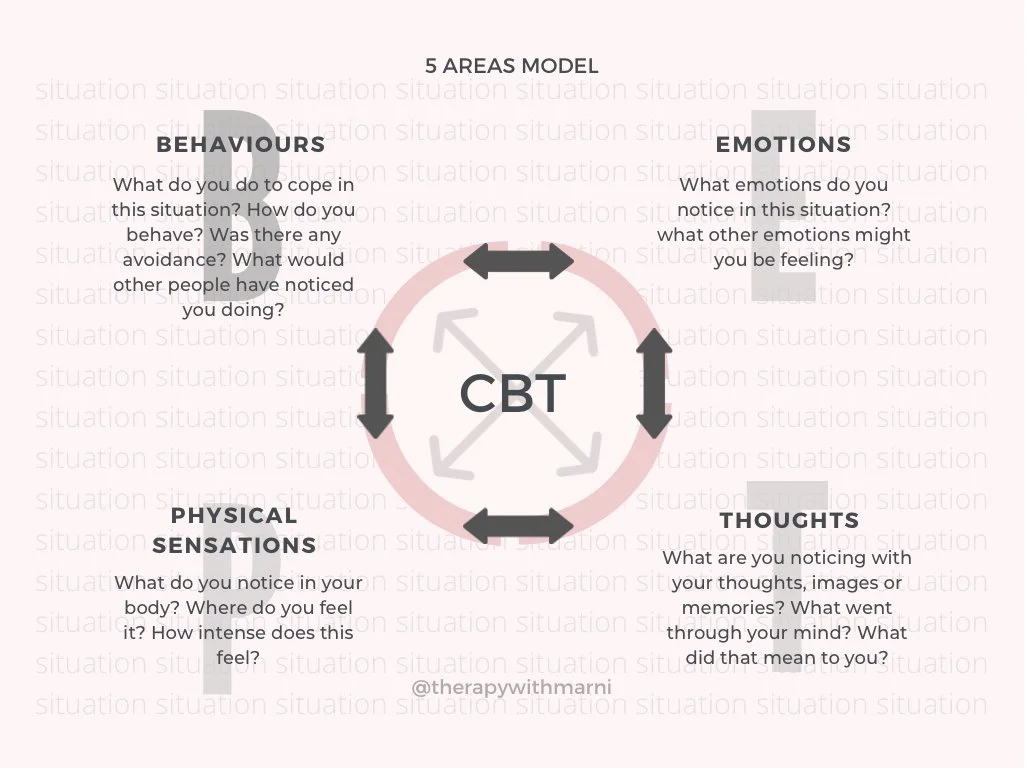What is Cognitive Behavioural Therapy (CBT) and what can it help with?
CBT is recommended in NICE guidelines for many different problems, including:
Depression
Generalised Anxiety Disorder
Social Anxiety
Health Anxiety
Obsessive Compulsive Disorder (OCD)
Post Traumatic Stress Disorder (PTSD)
Trauma
Phobias
Stress management
Work related stress
Assertiveness and confidence building
Low Self Esteem
Cognitive Behavioural Therapy or CBT, is a talking therapy, its based on the principle that thoughts, feelings, what we do (our behaviour), and how our bodies feel, are all connected. If we change one of these areas the others it will have an impact on the others. CBT focusses on our response to situations rather than the situation itself. Ultimately we explore what you would like to change and look at what you would like your ideal response to be.
CBT is an active form of therapy, where we look at creating helpful changes in your thought process or behavioural responses. There’s specific skills to be learnt in therapy which require practice. CBT requires motivation for change and commitment to the sessions. If motivation is something you are struggling with, this too can be discussed and specific strategies to tackle this will be taught.
You are at the centre of the therapeutic process and you are seen as the expert in your struggles. We will work together to achieve your goals and look at what you want from therapy and where you see yourself at the end of the forecasted sessions.
In order to make the most of the sessions, there is work to be done outside of the sessions. This will aid the learning in the sessions and gives you the opportunity to practice and apply the key messages from the sessions.

What is EMDR and what can EMDR help with?
EMDR stands for eye movement desensitisation & reprocessing. It is a psychotherapy approach developed in the late 1980's by Francine Shapiro; An American Psychologist. EMDR has predominantly been used for the treatment of trauma, but is also used for other difficulties such as phobias, depression, social anxiety and health anxiety.
EMDR walks the client through traumatic memories while focussing on an external stimulas so that the client is able to process the traumatic memory in a way that minimises distress. The external stimulus can be eye movements or tapping.
EMDR has a direct effect on the way the brain processes information, releasing emotional experiences that are trapped in the nervous system. This is turns allows the mind to process these experiences and furthermore work towards recovery.
There are 8 phases as part of the EMDR protocol. This takes you from assessment to reevaluation. EMDR doesn’t entail much in between session work compared to CBT.





